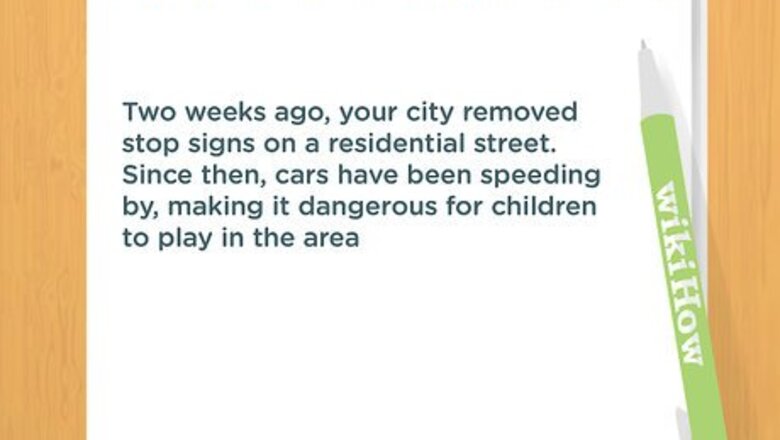
views
Brainstorming Your Letter
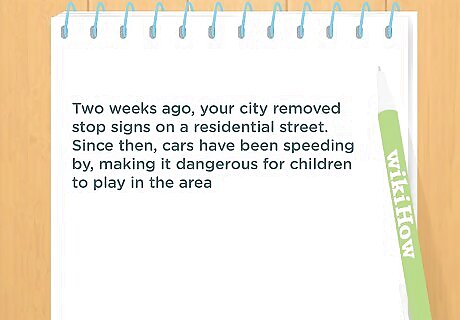
Identify exactly why you’re upset, and what you want to do about it. Only venting your anger can lessen the effectiveness of your letter. If you want someone to take action based on what you write, you need to be specific. Ask yourself questions like the following, and jot down your answers: What event or action made me upset? (For instance, your city removed stop signs on a residential street) When did it happen? (Two weeks ago) Why is it a problem? (Since then, cars have been speeding by, making it dangerous for children to play in the area)
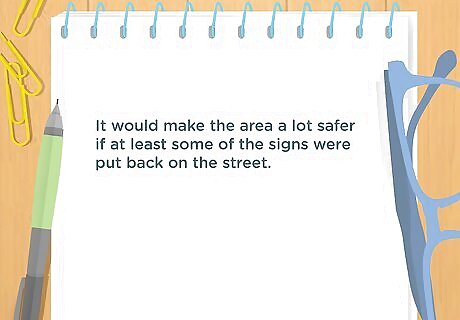
Decide how you want the problem to be fixed. Being clear about what you want the other person to do or change can help correct the problem. Otherwise, they might just see a bunch of angry comments and dismiss your concerns. For example, if you’re upset because you haven’t received a rebate for a phone you were promised, it can help to tell the recipient to get it to you as soon as possible. Your letter will be more successful if it focuses on solving the problem.

Find a specific person to write to. If you have a complaint with a specific person you’ve been in contact with, then this is taken care of. But if you want to write a criticizing letter to a business, government office, or other large organization, you might not know where to send the letter. Writing to a specific person rather than a generic email like [email protected] makes it much more likely that the problem will be taken care of. Research the business's/organization's website, or search for it online. Try to find a personal email address, like [email protected], relevant to your complaint. If you’ve been in contact with someone who has caused a problem, you can try writing to someone over their head. Ask for their supervisor’s contact information.
Organizing the Letter
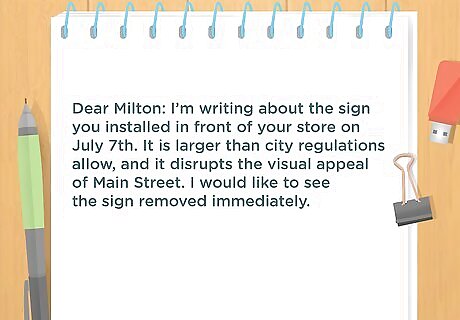
Write a brief introduction that summarizes your criticism. Be as direct as possible while still being respectful. Write a sentence or two that states the basic problem, and why you’re writing. For example: "Dear Milton: I’m writing about the sign you installed in front of your store on July 7th. It is larger than city regulations allow, and it disrupts the visual appeal of Main Street. I would like to see the sign removed immediately.”
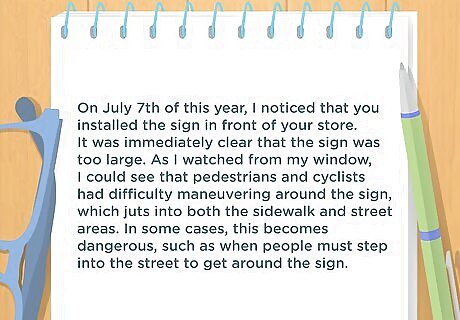
Follow up with a paragraph explaining what went wrong. Keep this paragraph brief as well, but explain your criticism clearly. Try just rehashing the events or actions that led to the issue: "On July 7th of this year, I noticed that you installed the sign in front of your store. It was immediately clear that the sign was too large. As I watched from my window, I could see that pedestrians and cyclists had difficulty maneuvering around the sign, which juts into both the sidewalk and street areas. In some cases, this becomes dangerous, such as when people must step into the street to get around the sign.”
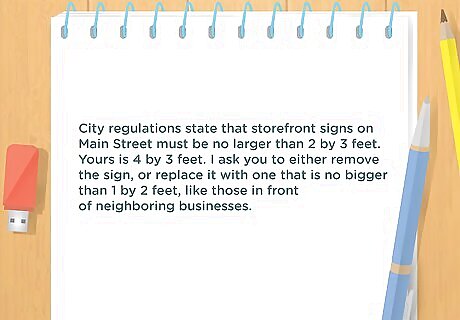
Specify what you want to happen in the next paragraph. Like the rest of the letter, this needs to be direct. A general statement like “you should fix this issue” doesn’t offer a clear plan of action, and they’re more likely to ignore your criticism. For a higher chance of success, write exactly what you want to happen. If your criticism is the starting point in a negotiation, aim high, then expect to negotiate down. You can offer a couple of options for fixing the problem. For example: “City regulations state that storefront signs on Main Street must be no larger than 2 by 3 feet. Yours is 4 by 3 feet. I ask you to either remove the sign, or replace it with one that is no bigger than 1 by 2 feet, like those in front of neighboring businesses.”
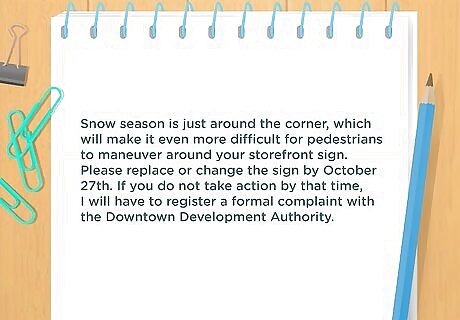
Give an exact timeframe for dealing with the issue. If you don’t say exactly when the issue needs to be fixed, the recipient will likely put your letter at the bottom of their “to do” list. Write when you would like to see action, and what the consequences will be for not responding. For example: "Snow season is just around the corner, which will make it even more difficult for pedestrians to maneuver around your storefront sign. Please replace or change the sign by October 27th. If you do not take action by that time, I will have to register a formal complaint with the Downtown Development Authority.”

Format your letter. To make sure your letter is taken seriously, pay attention to its appearance. Use a professional font, like Times New Roman, at a legible size (12 point). Put the date at the top of the letter, then open it with a greeting like "Dear Thomas" (if you know the person) or "The Honorable Senator Franklin" (in more formal circumstances).

Include your contact information. Make sure that your letter includes your contact info (either at the top or bottom): your full name, email, phone, and physical address. That way, the recipient can get in touch if necessary .

Enclose or attach copies of any related documents. If there are materials that help explain your complaint, include those so the recipient can review. For example, if you’re criticizing a company for a defective product, show them your sales receipt and warranty. However, only send copies of these documents – keep the originals for yourself in case you need them latter. If you do send enclosures or attachments, mention so in your letter: “Please see the attached sales receipt and warranty to verify my purchase and coverage.”

Proofread for tone and grammar. Once your letter is all put together, read it carefully to check for typos and other issues. At the same time, check to make sure that your tone doesn't come across as vicious. It will help to have someone else read and let you know what they think. For instance, consider revising a sentence like "I can't believe that your company sells this kind of trash. This product isn't worth one cent, let alone $200 of my hard-earned money." Try rewriting it as "I am upset by the low quality of this product. I don't believe that it meets the standards of your company."

Keep a copy of the letter. You’ll want to have a record of what you sent in case the complaint escalates in the future. Make a copy if you are sending a physical letter. If you are emailing someone, save the letter in your “sent” box, or cc the letter to your own email address so you receive a copy.
Keeping Your Letter Effective

Don’t write the letter when you’re really angry. If something happened to upset you, it’s often best to to cool off before responding. This gives you a chance to let your emotions settle, and to focus on the issue to be resolved. Give yourself 24 hours or so to think before writing the letter, especially if the issue is ongoing. If you can think clearly about what the problem is and how you want it to be fixed, you should be ready to write the letter.
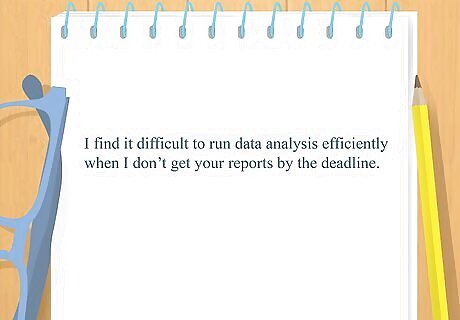
Use “I” rather than “you” statements. “I” statements put the emphasis on your complaints and problems about the issue rather than your personal feelings about the recipient of the letter. This keeps them from feeling attacked, and makes it more likely that your issue will be resolved. For instance, if you’re writing to criticize a coworker’s performance, avoid statements like: “You never seem to get your reports on time, and you don’t seem to care about the rest of us.” Instead, try writing: “I find it difficult to run data analysis efficiently when I don’t get your reports by the deadline.”
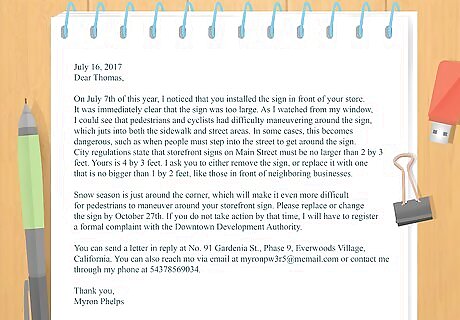
Keep it brief. It's important to avoid using a criticizing letter as an opportunity to let go of every pent-up frustration you. Just focus on identifying one issue that needs to be resolved and be direct about it. Try to keep your letter to just a few paragraphs.




















Comments
0 comment